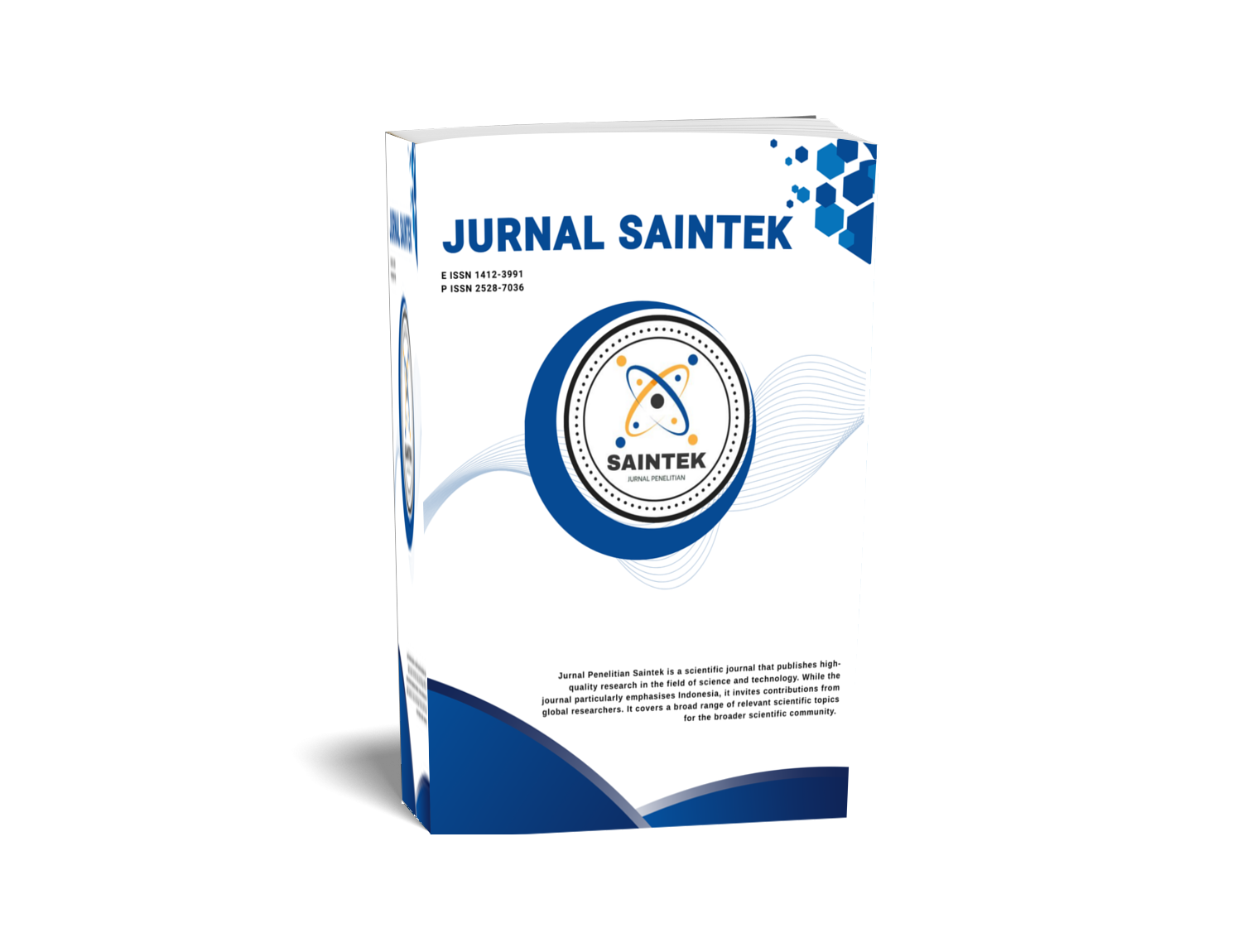TEST ACTIVITIES SOME COMPOUNDS OLIGORESVERATROL RESULT OF INSULATION OF SKIN HOPEA ODORATA PLANT AS PREVENT 2-DEOKSIRIBOSE DEGRADATION
DOI:
https://doi.org/10.21831/jps.v13i1.183Keywords:
Hopea odorata, Oligoresveratrol, 2-deoxyribose degradation assayAbstract
The objective of the study were measured inhibitory of 2-deoxyribose degradation activity of balanocarpol (1), ampelopsin H (2), hopheaphenol (3), and hemlesyanol C (4) which are resveratrol compounds from isolation of stem bark of Hopea odorata, and to study of different activity as 2-deoxyribose degradation activity from this compounds. Methods of this study to measured 2-deoxyribose degradation activity test with Fenton reaction method. Activity of 2-deoxyribose degradation activity calculated as percentage absorbansi decreased sample with bioactive compounds compared with a blank. As positif control used vitamin C and BHT (Butylated Hydroxy Toluena). The result of this study showed activity each compounds as 2-deoxyribose degradation activity of balanocarpol (1), ampelopsin H (2), hopheaphenol (3), and hemlesyanol C (4) with an IC50 1802,3; 4840,0; 61,8 and 425,5 mg/ml respectively. Hopeaphenol (3) showed more active than vitamin C (IC50 83,9 mg/ml) and BHT (1328,1mg/ml)
References
Aruoma O.I. 1994. Free radicals and antioxidant strategies in sports. J Nutr Biochem 5: 370-381.
Dai, J.R., Hallock Y.F., Cardellina J.H., Boyd M.R. 1998. HIVInhihibitory and cytotoxic oligostilbenoids isolated from the leaves of Hopea malibato. J Nad Prod 61: 351-353.
Cronquist A, (1981), An Integrated System of Classification of Flowering Plants, New York: Columbia In Press.
Halliwel B., Gutteridge J.M.C., Aruoma O.I. 1987. The deoxyribose method: a simple test tub assay for determination of rate constans for reaction of hydroxyl radicals. Anal Biochem. 165: 215-219.
Hart H. 1983. Kimia Organik (Terjemahan Suminar A.). Jakarta: Erlangga 75 Jurnal Penelitian Saintek, Vol. 13, No. 1, April 2008: 65-76 Heyne K. 1987. Tumbuhan berguna Indonesia jilid III. Jakarta: Badan Litbang Kehutanan.
Kim H. J, Eun J.C, sung H. C., shin K. C., Heu D. P., Sang W. C. 2002. Antioxidative activity of resveratrol and its derivatives isolated from seed of Paeonia lactiflora. Biosci Biotechnol Biochem 66: 1990-1993.
Muhilal. 1991. Teori radikal bebas dalam gizi dan kedokteran Cermin Dunia Kedokteran . 73: 9-11.
Seo E.K., Chai H., Constant H.L., Santisuk V.R., Vichai R., Christopher W.W.,. Farnsworth N.R , Cordell G.A., Pezzuto J.M., Kinghron A.D. 1999. Resveratrol tetramer from Vatica diospyroides. J Org Chem 64: 6976-6983. Soerianegara I., Lemmens R.H.M.J. 1994. Plant resources of South East Asia, 5 (1), timber trees: major commercial timbers. Prosea: Bogor, Indonesia.
Tanaka T., Ito T., Ido Y., Son T.K., Nakaya K., Linuma M. , Ohyama M., Chelladurai V., 2000a . Stilbenoids in the stem bark of Hopea parviflora. Phytochemistry 53: 1015 –1019.
Tanaka T., Ito T., Nakaya K., Linuma M., Riswan S. 2000b . Oligostilbenoids in the stem bark of Vatica rassak. Phytochemistry. 54: 63-69.
Tanaka T., Ito T., Nakaya K., Iinuma M., Takashi Y., Naganawa H., Matsura N.,. Ubukata M. 2000c . Vatikanol D, a novel resveratrol hexamer isolated from Vatica rassak, Tetrahedron Letters. 41: 7929 – 7932.
Downloads
Published
How to Cite
Issue
Section
Citation Check
License
Who Can Submit?
Any individual may submit an original manuscript for consideration for publication in Jurnal Penelitian Saintek as long as they hold the copyright to the work or are authorized by the copyright owner(s) to submit it. Authors retain initial ownership of the copyrights to their works prior to publication, except in cases where, as a condition of employment, they have agreed to transfer copyright to their employer.
User Rights
Jurnal Penelitian Saintek is an Open Access journal. Users are granted the right to read, download, copy, distribute, print, search, or link to the full texts of articles, provided they comply with the conditions of the Creative Commons Attribution-ShareAlike License 4.0 (CC BY-SA 4.0).
https://creativecommons.org/licenses/by-sa/4.0/
Author Rights
Authors retains copyrights.
Jurnal Penelitian Saintek by http://journal.uny.ac.id/index.php/saintek is licensed under a Creative Commons Attribution-ShareAlike 4.0 International License.










